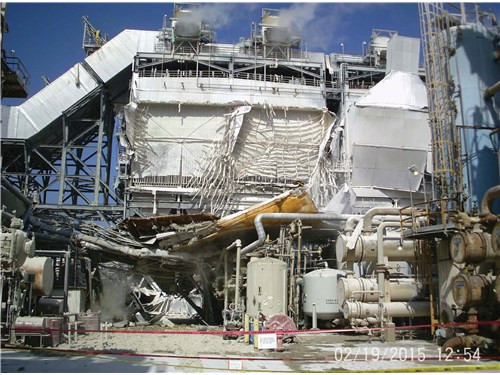
An excellent article by paramedic Bradley Denney who suffered HF burns from a refinery accident. It gives much information about HF – its properties, dangers, treatment and its transport – in great detail.
Bradley Denney, RN/MICT, has been involved with the fire service for over 38 years and EMS for over 36 years. He has worked as a frontline firefighter and EMT to assistant fire chief and hazardous materials technician and paramedic. In 2007, he became a registered nurse. He has taught hazmat courses for fire, law enforcement and EMS, and taught HF-specific classes at the Kansas HazMat/WMD Symposium in 2006 and 2007. He also has over 15 years of experience working with HF acid in the oil refining industry. He was instrumental in initiating first aid protocols in the refinery emergency facility setting that ultimately would save his life.
Read the entire article from EMSWORLD here. The following, taken from the article, is part of his story:
I became interested in HF while working in an oil refinery that uses it as a catalyst to make high-octane gasoline. As a paramedic, I found the effects of HF on the human body fascinating. I learned what I could about it and began teaching HF safety to my coworkers.
Then, in 2001, I was involved in an HF incident in which I was seriously exposed. I had been sprayed with anhydrous HF at approximately 150 pounds of pressure when a ¾” pipe broke at an ell as I was preparing to remove a plug. The HF had eaten the threads inside the ell and the weight of my pipe wrench caused the damaged pipe to give way, spraying both my legs just below my groin, and my right forearm. That exposure began a battle for my life that continues today.
Luckily, our local EMS and emergency facility had been trained on the dangers of this acid and proper treatment. Many EMS and ER personnel have probably never heard of this dangerous compound, but all emergency services, fire or law enforcement personnel who operate near and may be called to respond to any facility that uses or manufactures a form of HF should receive yearly training on treatment for HF exposure. This information should be available from your county LEPC.
After I was burned, the HF acid penetrated the Nomex coveralls I was wearing under my coat. (The photo of my left leg shows the flame pattern caused by the splatter from acid hitting my right leg.) The fluoride immediately penetrated the skin and bound to the calcium and magnesium in my blood and body tissues, which caused severe heart arrhythmias about 1 hour post-burn.
I was flown by helicopter to a burn center at Hillcrest Hospital in Tulsa, Oklahoma. There, despite the fact that I had at least 16% BSA, the burn center doctors and cardiologist refused to let me die. They called all over the world, looking for help from HF specialists and were told, “Make him comfortable, let his family say goodbye, and let him go.” Thank God, they refused and kept working on me. They stopped counting the defibrillator shocks after 15. (By the way, THAT HURTS!!!) By the grace of God, a very dedicated nurse, and those stubborn doctors, I am still here.

